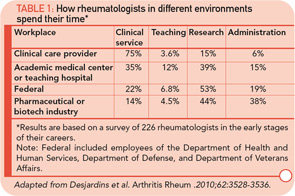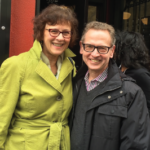Dr. Siegel says that during his time at the FDA, he was approached about developing a clinical research program at various universities, and he says this would have been another logical avenue for him to follow post-FDA. But, he says that an academic research position that follows immediately after a research fellowship is the more conventional path. He was not comfortable making the transition to academics at this stage in his career.
Nonetheless, the path that Dr. Siegel did choose and that put him in a senior group medical director position is a bit unusual for someone leaving the FDA. “People come out of the FDA all the time to enter industry,” he says. This usually means entering the regulatory side of the business. “A transition to the clinical side, like I made, is more unusual,” Dr. Siegel points out. “I knew I could do regulatory affairs, but what excites me is drug development and getting drugs that work better for patients.” The attractions on the clinical side include working on proof-of-concept studies, early- or late-stage drug development, phase III safety and efficacy studies, and helping determine how a drug will be approved and marketed, he says.
Snapshot: A Rheumatologist’s Life in Industry
“When I get called ‘Dr. Davis’ at work, I know I’m in trouble,” jokes Dr. Davis. “It’s always ‘John’ at the office. Physicians who are successful in the pharmaceutical industry are the ones who are able to work with multiple functions and can leave some of the ego at the door.”
The worlds of clinical or academic medicine and industry are vastly different, continues Dr. Davis. “In medicine, you pretty much do it all on your own. You’re in a silo, and you’re rewarded for going in-depth in one disease. In industry, you have to be multifaceted,” he continues. “You must be able to work with different groups, including clinical operations, regulatory affairs, legal affairs, different research groups, and the commercial departments. You function as one member of a cross-functional team.
“For me, it’s refreshing to work from a team approach,” he says.
Dr. Davis says that some days when he’s driving home, he’s amazed by the variety of activities he’s been involved in during the course of the day. “I work closely with bench research scientists from the discovery of a molecule to proof-of-concept studies to phase I and II clinical trials. I have the opportunity to influence the design of clinical trials and help interpret the data,” he says. On a given day, Dr. Davis says, he “might give clinical input to a research colleague on diagnostic issues or discuss business development with someone from our partnering group. I might help a colleague involved with phase III trials and look at data to see how well the treatment worked in all patients or in particular subsets of patients,” he notes as examples.


